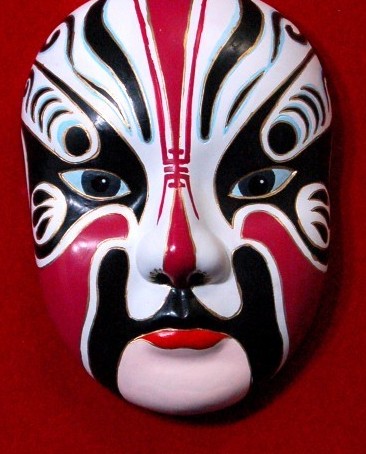Chinese Opera Mask
July 6, 2009
China is prevalently well-known sort of musical theater and play. The Chinese opera has gained fascination by various people in the world. It is a grand performance casted by several performers in vibrantly colored costumes moving along a swift and dramatic music. Almost noticeably though, are performers or actors wearing masks—Chinese opera masks—which are frequently adjusted throughout the entire performance.
One of the most glorious aspects of the Chinese Opera is the Chinese opera mask and Facial Make-up applied to present the different characters in a production. The use of symbolic colors, stylized lines, and legendary facial exaggeration all serve the performance magic and brilliance. There is actually nothing that compares to a nice and artistic rendition of one of China's favorite stories from ancient events and classical literature.

There have been scholarly discussions relating to the origins of Chinese Opera mask wearing and face painting. A widely held theory is that face painting developed from the dancings called “Lanlingwang (Prince Lanling)" from the Tang Dynasty (A.D. 618-907).
Specifically, Chinese opera masks are utilized mainly in two legendary methods, either as painted on face or are worn as decorated ceramics or as think cloth. The origination of customary facial makeup began essentially from totems that were created centuries before. Consequently, the facial makeup finally became well-known as facial paintings.
Thus while the opera performance is firmly based on allusion, such as footwork, gestures, and other body motions, carrying the opera with even an elaborated Chinese opera masks further intensifies and enhances the entire acting or role playing. Use of Chinese opera masks produces more meaning to the story or opera, and more enthrallment or interest among the different range of audience.
Posted by Chinese Opera. Posted In : Chinese Art
